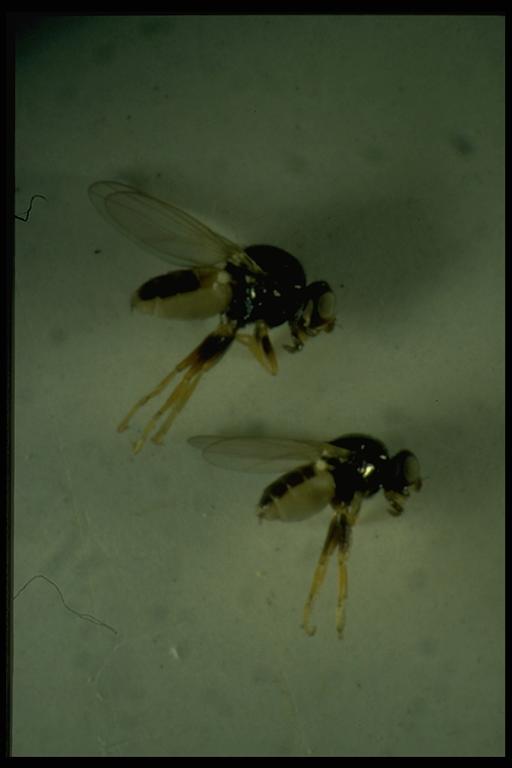
Eye gnats, Hippelates sp. (Diptera: Chloropidae). Photo by Drees.
Common Name: Eye gnat
Scientific Name: Hippelates sp.
Order: Diptera
Description: Adults are small (1/16 to 1/8 inch), dark gray to black-bodied flies with clear wings, somewhat similar to tiny houseflies.
Chloropid flies may be confused with fruit flies (Drosophila), but can be separated by characteristic antennal structures: the chloropid flies have a simple hair-like projection (arista) on the last antennal segment, whereas the arista on Drosophila are feathered.
Life Cycle: Clusters of eggs are deposited on or in the soil by female flies. Larvae resemble tiny maggots and develop through several stages (instars) over 7 to 11 days in warm weather. Larvae pupate close to the soil surface and emerge as adults in about a week. Development from egg to adult can occur in about 21 days, but takes longer during colder winter months. They can occur year-round and may be locally abundant at certain times of the year, such as spring and fall, when conditions are favorable for their development.
Habitat and Food Source(s): Adults have lapping mouthparts capable of and rasping (scarifying) because of spines covering the mouthpart (labella). Larvae develop in a variety of habitats such as decaying plant and animal matter and plant rootlets, particularly in freshly disturbed, well drained and aerated sandy soils. Female flies attack animals while males are attracted to flowers. Adult females can be collected with a fine-mesh aerial net by swinging it around ones head while walking through infested areas.
Pest Status: Adults are a true nuisance; although the do not bite, they are attracted to eyes and any wet areas on the body such as mucus, pus and blood on and around wounds and exposed genitals of animals; capable of spreading some diseases of man and animals such as “pinkeye” (conjunctivitis).
For additional information, contact your local Texas A&M AgriLife Extension Service agent or search for other state Extension offices.
Literature: James & Harwood 1969; Swan & Papp 1972.